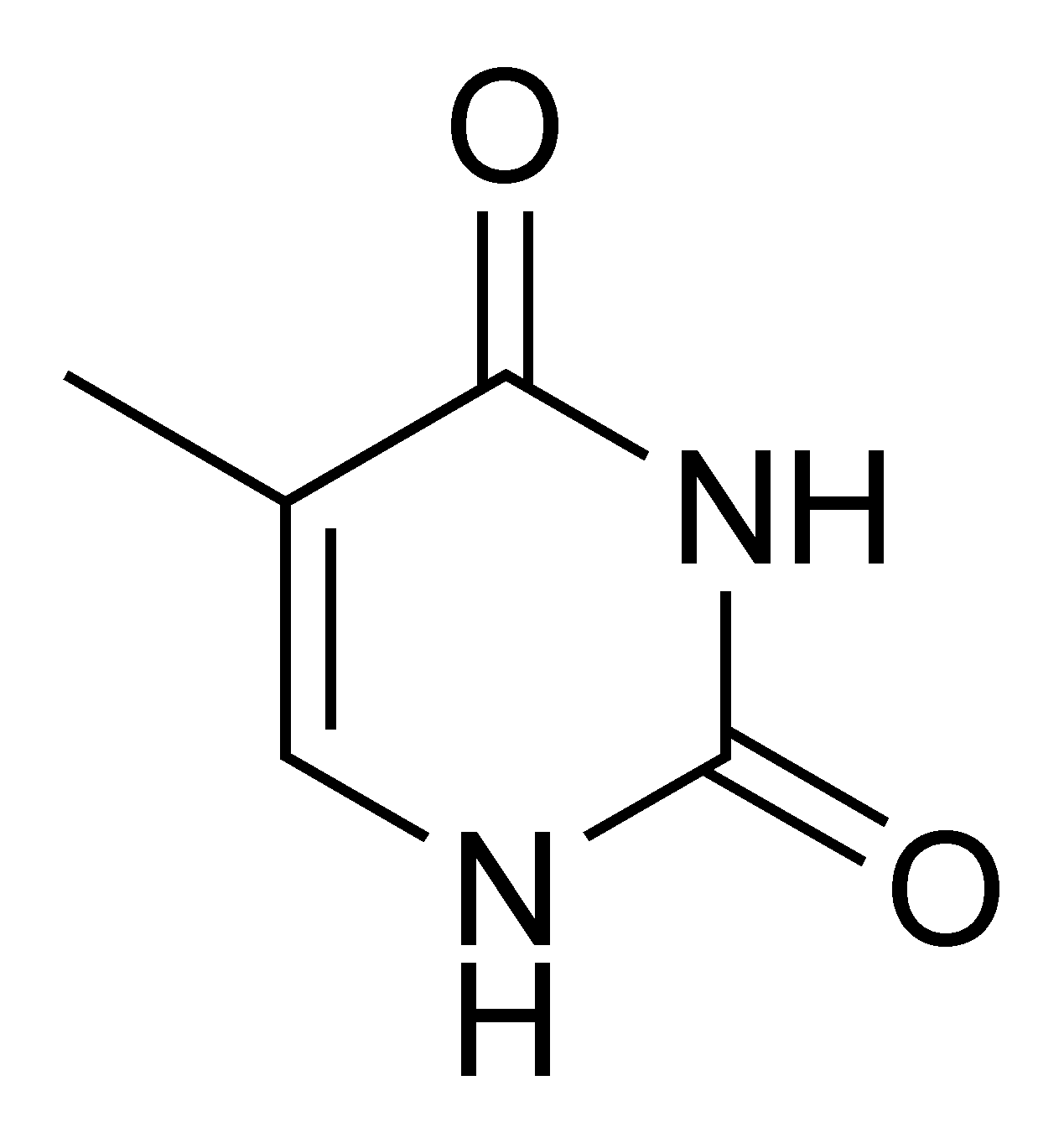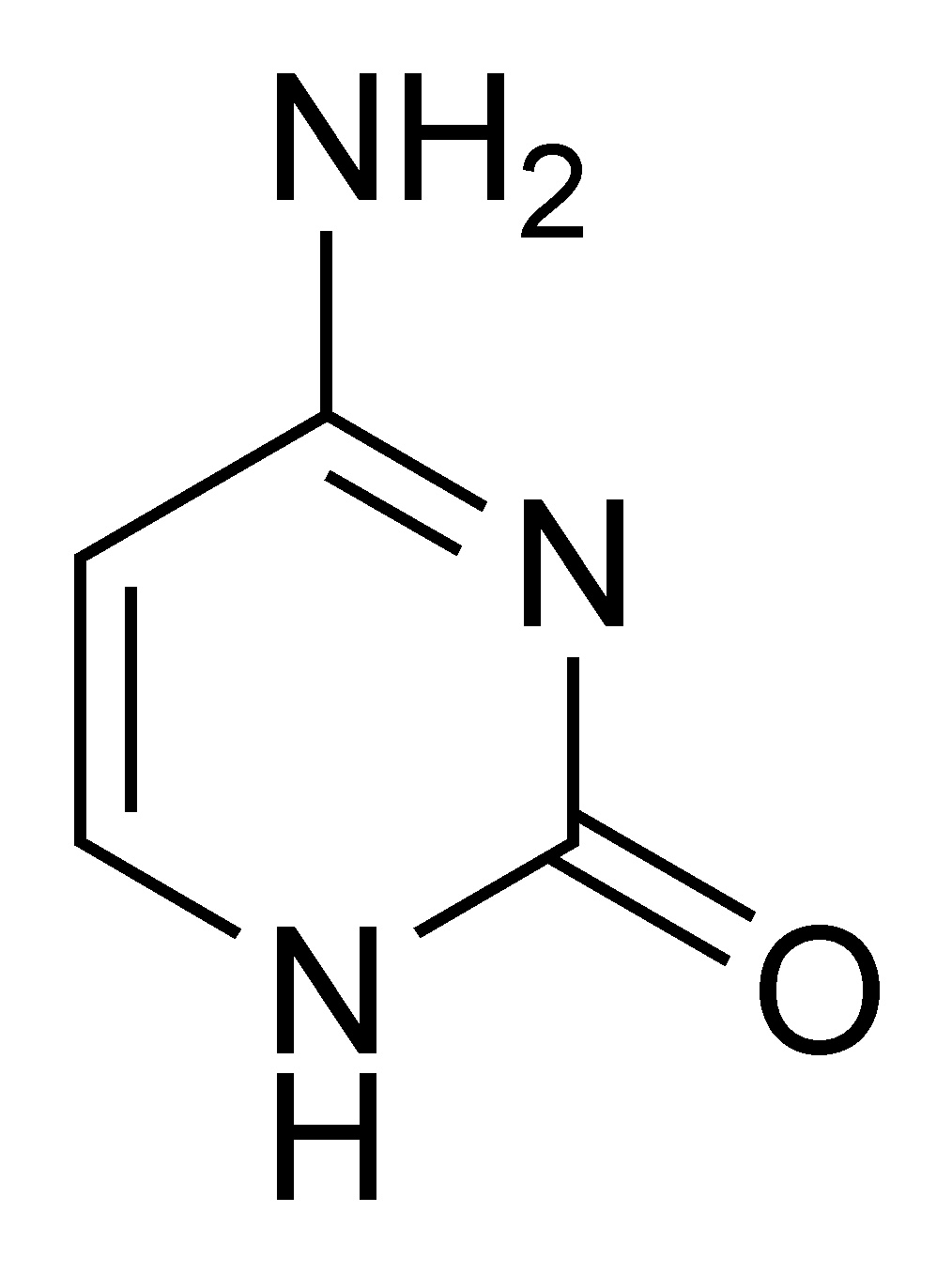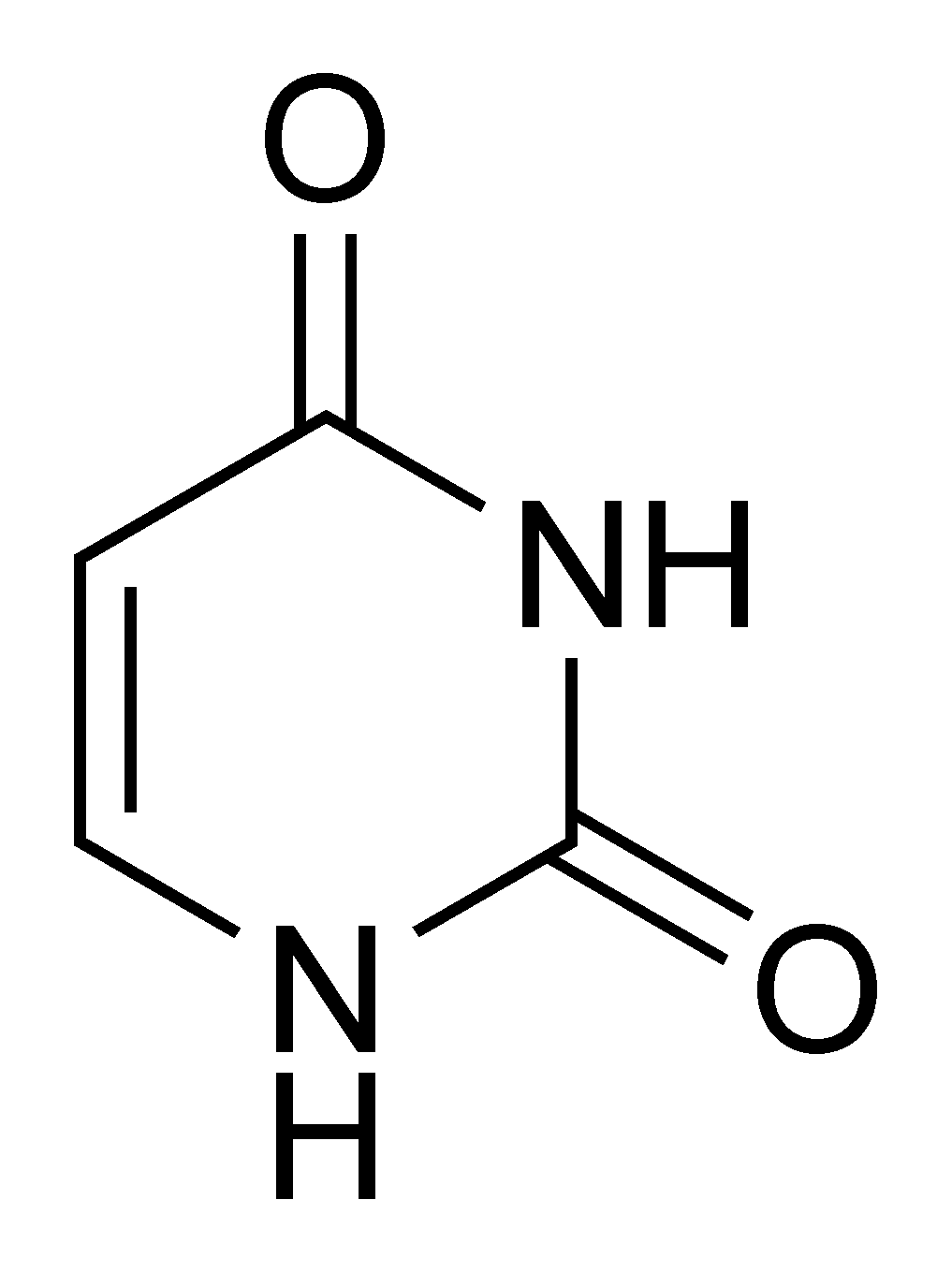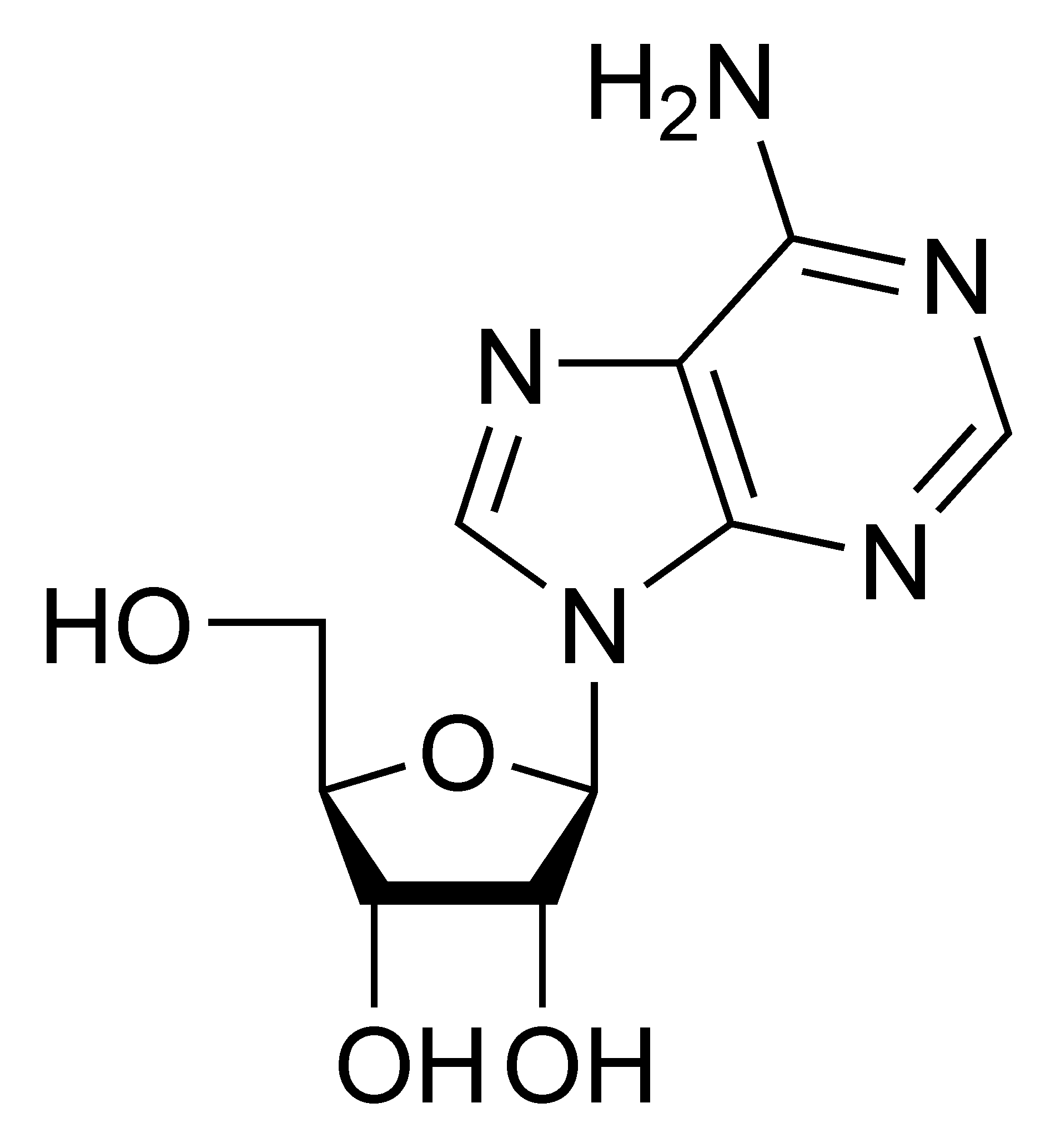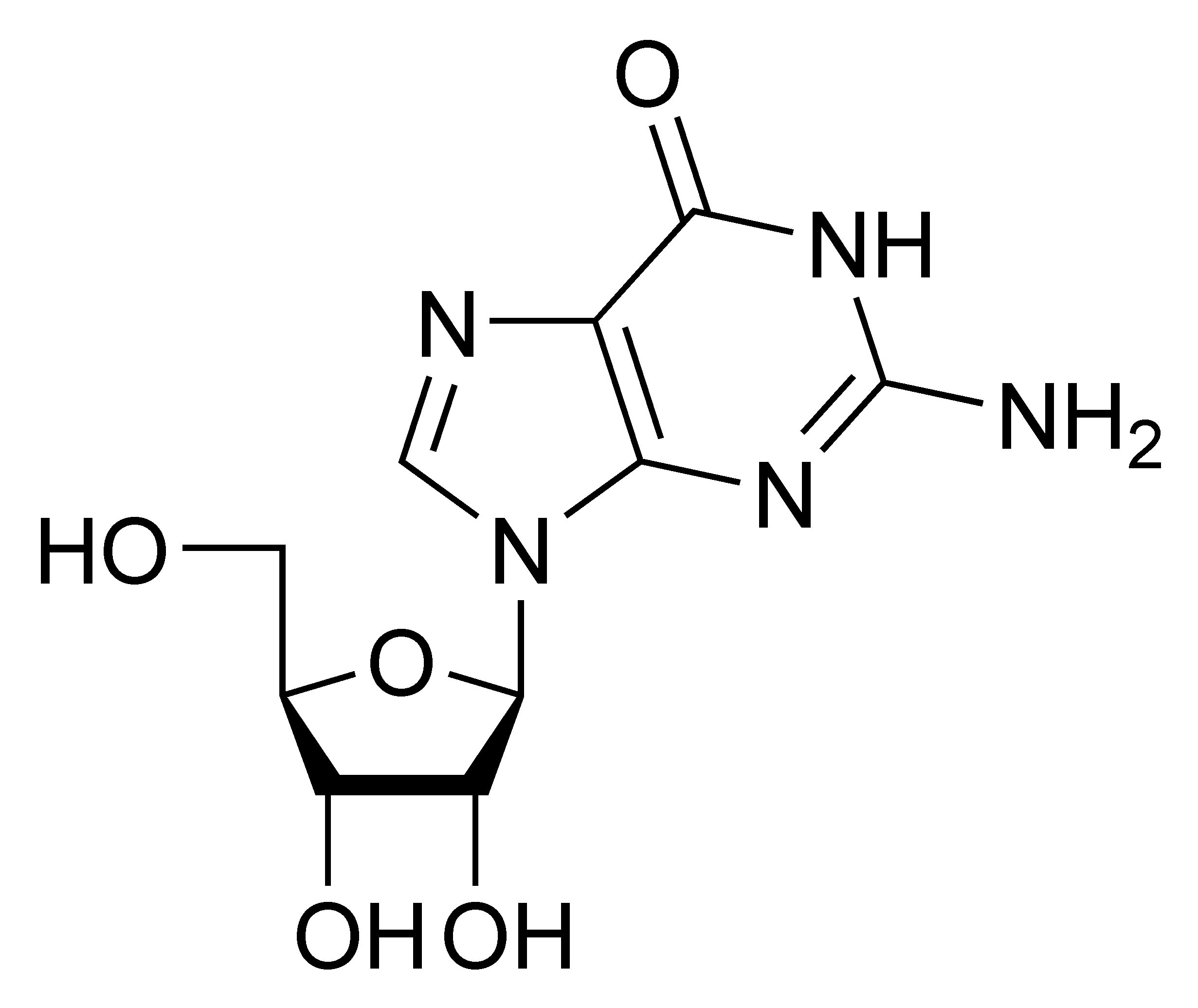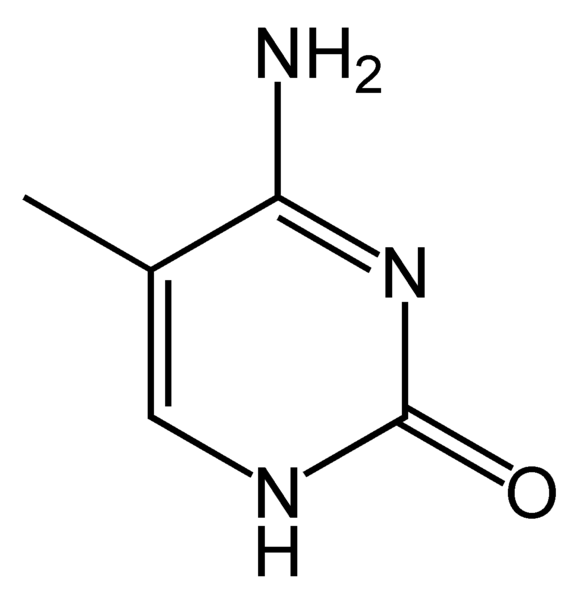Nucleobase
Nucleobases (or Nucleotide bases) are the parts of RNA and DNA that may be involved in pairing (see also base pairs). These include cytosine, guanine, adenine, thymine (DNA) and uracil (RNA). These are abbreviated as C, G, A, T, and U, respectively. They are usually simply called bases in genetics. Because A, G, C, and T appear in the DNA, these molecules are called DNA-bases; A, G, C, and U are called RNA-bases, respectively.
Uracil replaces thymine in RNA. These two bases are identical except that uracil lacks the 5' methyl group. Adenine and guanine belong to the double-ringed class of molecules called purines (abbreviated as R). Cytosine, thymine, and uracil are all pyrimidines (abbreviated as Y).
A base covalently bound to the 1' carbon of a ribose or deoxyribose is called a nucleoside, and a nucleoside with one or more phosphate groups attached at the 5' carbon is called a nucleotide.
Apart from adenosine (A), cytidine (C), guanosine (G), thymidine (T) and uridine (U), DNA and RNA also contain bases that have been modified after the nucleic acid chain has been formed. In DNA, the only modified base is 5-methylcytidine (m5C). In RNA, there are many modified bases, including pseudouridine (Ψ), dihydrouridine (D), inosine (I), ribothymidine (rT) and 7-methylguanosine (m7G).[1][2]
Hypoxanthine and xanthine are two of the many bases created through mutagen presence, both of them through deamination (replacement of the amine-group with a hydroxyl-group). Hypoxanthine is produced from adenine, xanthine from guanine.[3] Similarly, deamination of cytosine results in uracil.
Structure
- The "skeleton" of adenine and guanin is purine, hence the name purine-bases.
- The "skeleton" of cytosine, uracil and thymine is pyrimidine, hence pyrimidine-bases.
Main bases
These are incorporated into the growing chain during RNA and/or DNA synthesis.
Modified purine bases
These are examples of modified adenosine or guanosine.
Modified pyrimidine bases
These are examples of modified cytidine, thymidine or uridine.
Novel Bases
A vast number of nucleobases analogues exist. The most common application are used as fluorescent probes, either directly or indirectly, such as Aminoallyl nucleotide which are used to label cRNA or cDNA in microarrays. Several groups are working on alternative "extra" base pairs to extend the genetic code, such as isoguanine and isocytosine or the fluorescent 2-amino-6-(2-thienyl)purine and pyrrole-2-carbaldehyde.
In medicine, several nucleoside analogues are used as anticancer and antiviral agents. The viral polymerase incorporates these compounds with non-canon bases. These compounds are activated in the cells by being converted into nucleotides, they are adminisered as nuclosides as charged nucleotides cannot easily cross cell membranes.
References
- ↑ http://www.mun.ca/biology/desmid/brian/BIOL2060/BIOL2060-22/CB22.html
- ↑ http://www.biogeo.uw.edu.pl/research/grupaC_en.html
- ↑ T Nguyen, D Brunson, C L Crespi, B W Penman, J S Wishnok, and S R Tannenbaum, DNA damage and mutation in human cells exposed to nitric oxide in vitro, Proc Natl Acad Sci U S A. 1992 April 1; 89(7): 3030–3034
See also
External links
cs:Nukleové báze de:Nukleinbasen eo:Nitrogena bazo it:base azotata
